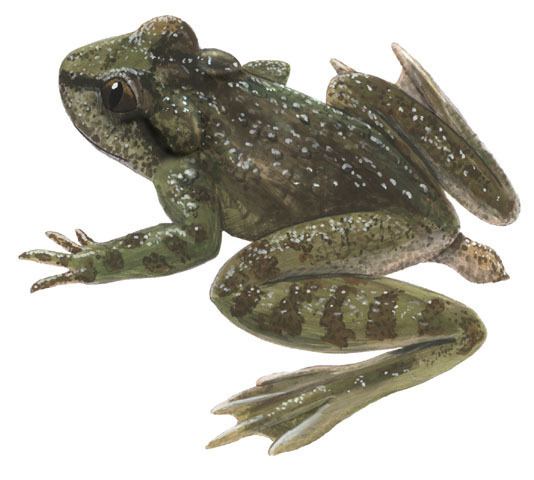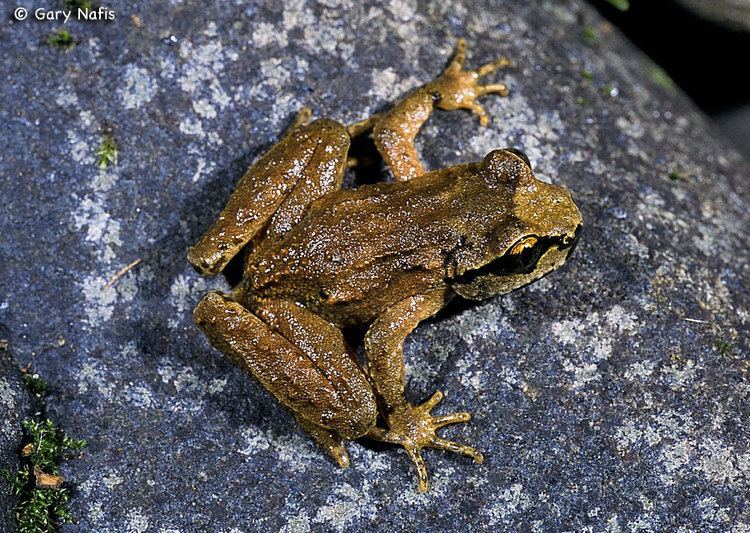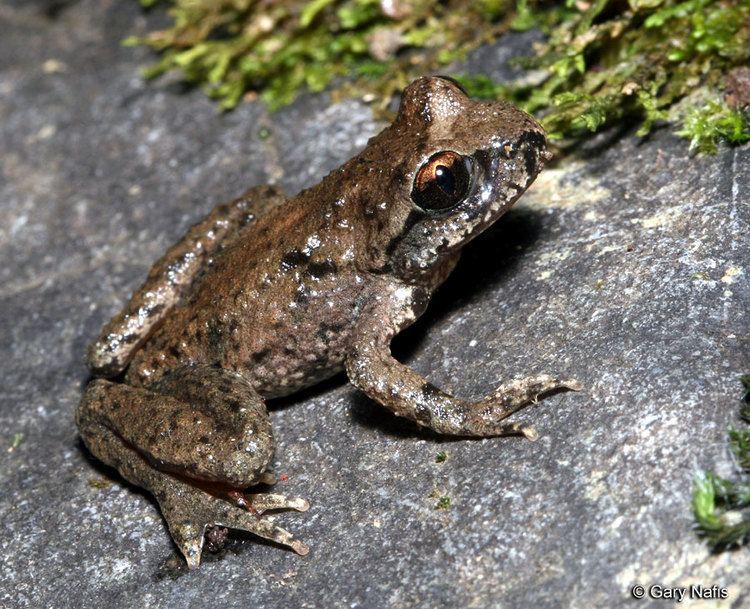Order Anura Scientific name Ascaphus Rank Genus | Phylum Chordata | |
 | ||
Family AscaphidaeFejérváry, 1923 Similar Ghost frog, Sooglossidae, Allophryne, Torrent salamander, Shovelnose frog | ||
Mpg ranch tailed frog
The tailed frogs are two species of frogs in the genus Ascaphus, the only taxon in the family Ascaphidae /æˈskæfᵻdiː/. The "tail" in the name is actually an extension of the male cloaca. The tail is one of two distinctive anatomical features adapting the species to life in fast-flowing streams. These are the only North American frog species that reproduce by internal fertilization.
Contents

Its scientific names means ‘without a spade’, from the privative prefix a- and the Ancient Greek skaphís (σκαφίς, ‘spade, shovel’), referring to the metatarsal spade, which these frogs do not have.

Let s meet tailed frog
Taxonomy

Until 2001, the genus was believed to be monotypic, the single species being the tailed frog (Ascaphus truei Stejneger, 1899). However, in that year, Nielson, Lohman, and Sullivan published evidence that promoted the Rocky Mountain tailed frog (Ascaphus montanus) from a subspecies to its own species. Since then, the former species has been formally called coastal tailed frog.
General morphology

The existence of the visible "tail" appendage makes this frog family distinct from all other frogs. Thus, its wider classification is difficult. It is usually classified in the Archaeobatrachia suborder of ancient frogs, though some say it should be a sister to all other frogs. The "tail" is found only in males, and is actually part of the cloaca, used to insert sperm into the female during mating. This anatomical feature improves breeding success by minimizing loss of sperm in the turbulent, fast-flowing streams inhabited by this species. Thus, the tailed frogs exhibit internal fertilisation, rather than the external fertilisation found in other frogs.
These frogs are primitive in having a greater number of vertebrae than other frogs, in lacking the ability to vocalise, and in possessing free ribs. They are small 2.5 to 5.0 cm (0.98 to 1.97 in) and are found in steep, fast-flowing streams in Montana, Idaho, Washington, Oregon, and northern California in the northwest United States, and southeastern British Columbia.
The tailed frogs share certain characteristics with the Leiopelma, a genus of primitive frogs native to New Zealand, with which they may be phylogenetic sister taxa. The prehistoric Vieraella belongs to the tailed frog family.
General habitat
The habitat of the tailed frog is cold, fast-moving streams with cobblestone bottoms. They are mostly aquatic, but adults may emerge during cool, wet conditions to forage terrestrially. Breeding season lasts from May through September, and females deposit their eggs in strings under rocks in fast-moving streams. Larvae take one to four years to metamorphose in the cool, fast-moving mountain streams.
Adults forage primarily terrestrially along stream banks, but also occasionally feed underwater. A wide variety of food items is taken, including both aquatic and terrestrial larval and adult insects, other arthropods (especially spiders), and snails. Tadpoles consume small quantities of filamentous green algae and desmids. Large quantities of conifer pollen are consumed seasonally by tadpoles.
During the day, adults seek cover under submerged substrates in the stream, or occasionally under similar surface objects close to the stream. Individuals have also been found in crevices in spray-drenched cliff walls near waterfalls. During winter, individuals are less active, especially inland, and appear to retreat beneath large logs and boulders. Tadpoles require cool streams with smooth-surfaced stones with a minimum diameter of 55 mm (2.2 in). Tadpoles probably spend most of their time attached to such substrates by a large oral sucker. The large, sucker-like mouth parts of the tadpoles are a second distinctive feature of the species, enabling survival in turbulent water unsuitable for other frogs. They prefer turbulent water to smooth, swiftly flowing water.
